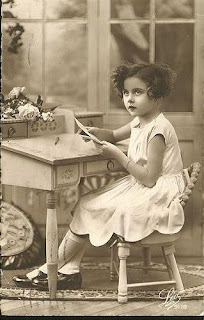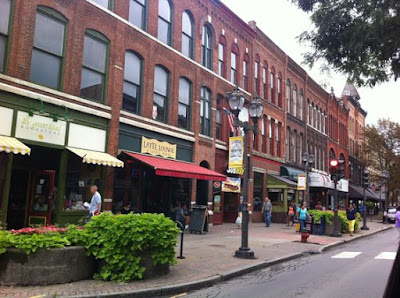The Joy of Letterwriting
The other day I came across a
magazine article that advised readers to slow the pace of modern life by handwriting
a letter – on stationery – and putting some pretty stamps on the envelope. What
a novel idea! And what a way to make us
seniors feel old, telling people how to enjoy an old custom that used to be a
common practice.
I started writing letters as a child when my grandfather, a post master in Villisca, Iowa, told me that I had to write letters if I wanted to receive them! I wrote to Gramps, and he wrote back, often enclosing plate blocks of pretty new stamps for my collection.
As a high school student in the 1960s I had a dozen pen pals –
several in different states, and others in England, Japan, New Zealand, and
Australia. We loved filling each other’s mail boxes with the letters we
decorated with a variety of stamps, because stamp collecting was part of the
fun of receiving mail. Our letters were handwritten, because very few kids knew
how to type in those days. Typewriters weren’t used for personal letters
anyway. They were used for school papers and business letters, if at all.
I learned to type during the
summer of 1969, between my sophomore and junior years in high school, because
typing was not part of the regular curriculum for college-bound students. When
I started college in the fall of 1971, my parents gave me a manual typewriter
that I would use to type papers for my classes. I have to wonder why typing was
not included in the college prep curriculum since it was an essential skill for
a college student. Some of my peers had to pay a typist to do what they had
never learned to do themselves!
I was still using the old
manual in graduate school and beyond, to bang out the stories I submitted for publication
by obscure periodicals. The term “bang out” applies to manuals because the keys
have to be hit pretty hard to make a mark on a sheet of paper. The carriage had
to be returned manually at the end of every line. Errors had to be repaired
with correcting or liquid paper, and sometimes a page looked so patched up it
had to be re-typed. No wonder we preferred to hand write letters – and pretty
stationery was always a welcome gift.
After college and graduate
school, I held several office jobs where I learned to use an electric
typewriter that didn’t require as much muscle as the manual. In my job as an editorial assistant I used an
IBM Selectric – a new-fangled machine that used a typing element or “type ball”
instead of individual typebars. Wow, did that thing go fast! But I would have been happy to have a regular
electric typewriter to type the stories that I wrote when I got home from work.
I planned to buy one when my husband graduated from the surgeon’s assistant
program at UAB and got a job. Little did I know that Mark was selling his blood
to the plasmapheresis bank in order to surprise me with an electric Smith
Corona for Christmas in 1979!
That Smith Corona served me
well for nearly twenty years. Then the “Q” typebar malfunctioned, and I had to
ink in a ‘q’ every time I wrote about a queen, a quilt, or a quintet. In 1999 I
broke down and took a computer class at the Utica School of Commerce in
Oneonta. I realized I would have to learn to use a computer if I was to be a
part of the twenty-first century working world. A computer
keyboard has so many keys that aren’t found on a typewriter! Crazy things
happened to my manuscript when I hit the wrong key: entire paragraphs would
disappear in a millisecond. Sometimes I cried and called a computer-savvy
friend, who came over on her lunch break to rescue me from despair.
The first position where I had
to use my new-found computer skills was as administrative assistant for the
local Girl Scout office. I thought I was doing fine until a Girl Scout leader
called to find out why I wasn’t answering the email messages she was sending. Email?
What was that? So, I learned about email and eventually set up my own email
account.
These days I check my email about
once an hour. I receive messages from family and friends, as well as clients. My
business, Custom Ceremonies, would not exist without access to the internet. My
clients, mainly prospective brides and grooms, find me online, and their
personalized ceremonies are created on the computer and sent to them for
approval via email. But I still check my mailbox every day – the one on the
front porch – because I occasionally receive a letter from one of my friends
who likes to write letters the old-fashioned way. And I answer their letters in
handwritten prose, affixing a pretty stamp to the envelopes, because I know my
friends will enjoy receiving them as much as I enjoy receiving theirs.




Comments
Post a Comment